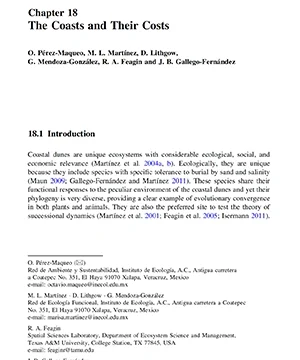Abstract or Summary

Sandy beaches and coastal dunes throughout the world are threatened by human encroachment, and as they are lost, so are the ecosystem services provided by them. Because the economic value of ecosystem services has seldom been assessed, the ecological and socioeconomic consequences of the degradation or destruction of beaches and coastal dunes remain largely unknown. We performed an intensive literature review and found only 18 studies in which ecosystem services from the beach and coastal dunes had been analyzed and their economic value calculated. Recreation, cultural, and aesthetic ecosystem services were those most widely studied and with the highest values. Protection has also been studied, but, surprisingly, the economic value of this ecosystem service assigned by society was smaller. Restoration of coastal dunes is becoming an increasingly necessary and increasingly expensive activity. The activities involved in restoration actions are quite diverse, although there are three goals: restoring natural dynamics, recreational/aesthetic, and protective. Removal of unwanted vegetation seems to be amongst the most expensive restoration activities. The paradox in current development trends on beaches and coastal dunes is that the coasts are over-exploited, but, by doing this, the ecosystem services that we value the most and that drive exploitation trends (recreation, aesthetic, and protection) are degraded or lost. This dead-end situation is the result of ecosystem services not being considered in the decision-making process, and a few ecosystem services being over-exploited while others are ignored. Evidence shows that, before investing in coastal dune restoration, natural ecosystems should be preserved in their own right, with the additional benefits that they provide to society. Economically, socially, and ecologically, conservation is a better choice than degradation followed by restoration.